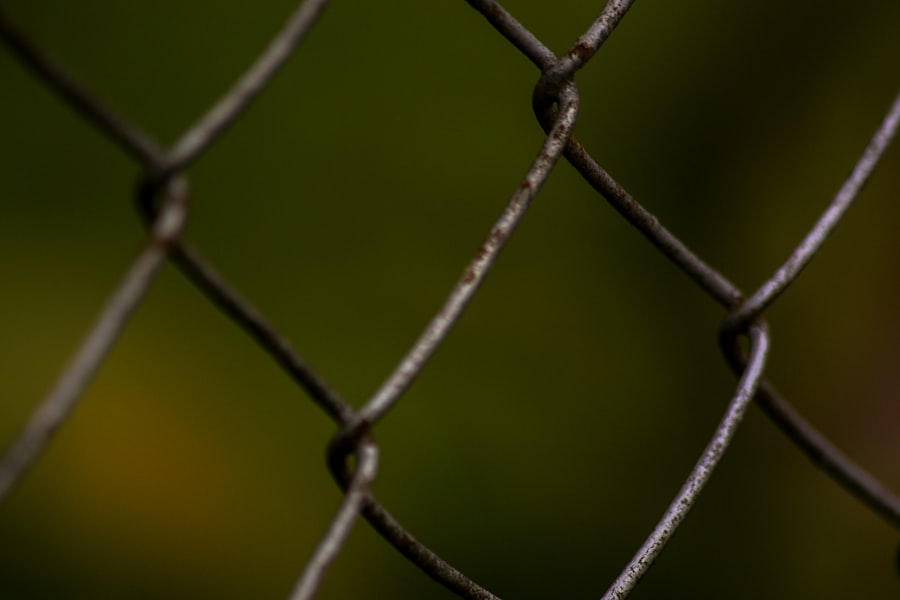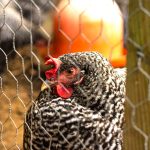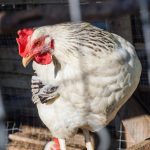Pest management is a critical aspect of successful gardening. Various organisms, including insects, rodents, and other animals, can cause significant damage to plants and crops. Effective pest control strategies are essential for maintaining garden health and productivity.
This article examines several approaches to pest management in gardens, such as:
1. Physical barriers: Fences, netting, and row covers to prevent pest access. 2.
Natural repellents: Plant-based or organic substances that deter pests. 3. Companion planting: Strategic placement of plants that naturally repel pests or attract beneficial insects.
4. Regular monitoring: Frequent inspection of plants to identify and address pest issues early. 5.
Alternative food sources: Providing separate areas for wildlife to reduce garden intrusion. 6. Professional consultation: Seeking expert advice for persistent or severe pest problems.
By implementing these methods, gardeners can effectively protect their plants while maintaining an environmentally responsible approach to pest control. These strategies promote a balanced ecosystem within the garden and minimize the need for chemical interventions.
Table of Contents
- 1 Creating Physical Barriers
- 2 Using Natural Repellents
- 3 Implementing Companion Planting
- 4 Regular Monitoring and Maintenance
- 5 Providing Alternative Sources of Nutrition
- 6 Seeking Professional Advice
- 7 FAQs
- 7.1 What are the common problems with chickens and tomato plants?
- 7.2 How can I keep chickens away from my tomato plants?
- 7.3 Are there any plants that can be used to deter chickens from tomato plants?
- 7.4 What are some other methods to protect tomato plants from chickens?
- 7.5 Are there any specific breeds of chickens that are less likely to damage tomato plants?
Key Takeaways
- Introduction to the Problem:
- Identifying common garden pests and their impact on plants
- Understanding the need for effective pest control methods
- Creating Physical Barriers:
- Installing fences, netting, or row covers to protect plants from pests
- Using barriers to prevent pests from accessing vulnerable areas of the garden
- Using Natural Repellents:
- Utilizing natural substances like garlic, neem oil, or diatomaceous earth to deter pests
- Applying repellents in a safe and environmentally friendly manner
- Implementing Companion Planting:
- Pairing compatible plants to repel pests or attract beneficial insects
- Utilizing companion planting to create a balanced ecosystem in the garden
- Regular Monitoring and Maintenance:
- Inspecting plants for signs of pest damage on a consistent basis
- Taking proactive measures to address pest infestations before they become severe
- Providing Alternative Sources of Nutrition:
- Offering alternative food sources to distract pests from valuable plants
- Creating a diverse and healthy environment to discourage pest activity
- Seeking Professional Advice:
- Consulting with local gardening experts or pest control professionals for personalized guidance
- Receiving professional assistance for persistent or complex pest issues
Creating Physical Barriers
Fences: A Deterrent for Larger Animals
Fences can be made from a variety of materials, such as wood, metal, or plastic, and should be tall enough to deter larger animals like deer or rabbits.
Netting and Row Covers: Protection from Insects and Birds
Netting and row covers are particularly useful for protecting plants from insects and birds. These barriers create a physical barrier that pests cannot easily penetrate, providing a simple and non-toxic solution to pest control. Additionally, physical barriers can also help protect your plants from harsh weather conditions, making them a versatile and practical option for gardeners.
Raised Beds and Containers: Elevating Your Plants to Safety
Another method of creating physical barriers is by using raised beds or containers for your plants. By elevating your plants off the ground, you can reduce the risk of pests like slugs and snails reaching them. Raised beds also provide better drainage and soil quality, promoting healthier plant growth overall. Containers can be placed on patios or balconies, making them an ideal solution for urban gardeners or those with limited outdoor space.
Using Natural Repellents

In addition to physical barriers, natural repellents can be an effective way to keep pests at bay in the garden. Many common household items can be used as natural repellents, such as garlic, onion, chili peppers, and vinegar. These ingredients can be used to create homemade sprays that deter insects and animals from damaging your plants.
For example, a mixture of garlic and chili peppers can be blended with water and sprayed onto plants to repel insects like aphids and caterpillars. Similarly, a solution of vinegar and water can be used to deter deer and rabbits from eating your plants. These natural repellents are safe for the environment and can be easily made at home, providing a cost-effective and sustainable solution to pest control.
Another natural repellent that is gaining popularity among gardeners is diatomaceous earth. This powdery substance is made from fossilized algae and is highly effective at deterring insects like ants, slugs, and beetles. When insects come into contact with diatomaceous earth, it absorbs the oils and fats from their exoskeletons, causing them to dehydrate and die.
Diatomaceous earth is non-toxic to humans and pets, making it a safe and environmentally friendly option for pest control in the garden. By using natural repellents, you can protect your plants from pests without resorting to harmful chemicals or pesticides.
Implementing Companion Planting
Companion planting is a traditional gardening practice that involves planting different species of plants together to benefit each other in various ways. One of the key benefits of companion planting is its ability to naturally repel pests by confusing their senses or masking the scent of vulnerable plants. For example, planting aromatic herbs like basil, mint, or rosemary alongside susceptible plants can help deter insects like aphids and whiteflies.
Similarly, planting marigolds around vegetable crops can help repel nematodes in the soil. By strategically choosing companion plants that complement each other’s growth habits and pest-repelling properties, you can create a more resilient and balanced ecosystem in your garden. Another advantage of companion planting is its ability to attract beneficial insects that prey on garden pests.
Plants like dill, fennel, and yarrow are known for attracting predatory insects like ladybugs, lacewings, and parasitic wasps, which feed on common garden pests like aphids and caterpillars. By providing a diverse range of flowering plants in your garden, you can encourage these beneficial insects to take up residence and help keep pest populations in check. Companion planting offers a natural and sustainable approach to pest control that promotes biodiversity and ecological balance in the garden.
Regular Monitoring and Maintenance
Regular monitoring and maintenance are essential for effective pest control in the garden. By staying vigilant and regularly inspecting your plants for signs of pest damage or infestation, you can catch problems early and take action before they escalate. Look for chewed leaves, discolored foliage, or unusual patterns of damage that may indicate the presence of pests.
Additionally, check the undersides of leaves and along stems for eggs, larvae, or adult insects that may be hiding out of sight. In addition to monitoring for pests, it’s important to practice good garden hygiene by removing any dead or diseased plant material that could attract pests or harbor diseases. Keep your garden free of weeds, fallen leaves, and other debris that could provide hiding places for pests or create favorable conditions for their reproduction.
Regularly prune overgrown plants to improve air circulation and reduce hiding spots for pests. By maintaining a clean and well-kept garden environment, you can minimize the risk of pest infestations and promote overall plant health.
Providing Alternative Sources of Nutrition

Diverting Pests with Attractive Alternatives
One effective way to deter pests from attacking your garden plants is by providing alternative sources of nutrition that are more attractive to them than your prized vegetables or flowers. For example, setting up bird feeders or planting nectar-rich flowers can help divert birds and pollinators away from your crops. By providing these alternative food sources, you can reduce the likelihood of pests targeting your plants while also supporting local wildlife populations.
Creating Habitat for Natural Predators
Another strategy for providing alternative sources of nutrition is by creating habitat for natural predators of garden pests. For example, building a small pond or installing a birdhouse can attract frogs, toads, and birds that feed on insects like slugs, snails, and caterpillars. By encouraging these natural predators to take up residence in your garden, you can help keep pest populations in check without resorting to harmful chemicals or pesticides.
Benefits of Alternative Nutrition Sources
Providing alternative sources of nutrition not only helps protect your plants from pests but also contributes to a more diverse and balanced ecosystem in your garden.
Seeking Professional Advice
If you’re struggling to control pests in your garden despite your best efforts, it may be time to seek professional advice. Local gardening centers or agricultural extension offices often have experts who can provide personalized recommendations for dealing with specific pest problems in your area. They can offer advice on selecting resistant plant varieties, implementing cultural practices that deter pests, or using targeted treatments that minimize harm to beneficial insects and wildlife.
In some cases, professional pest control services may be necessary to address severe infestations that pose a threat to your garden’s health and productivity. Pest control professionals have access to a range of tools and techniques for managing pests effectively while minimizing environmental impact. They can also provide guidance on integrated pest management (IPM) strategies that combine multiple approaches for long-term pest control without relying solely on chemical pesticides.
In conclusion, managing pests in the garden requires a multifaceted approach that combines physical barriers, natural repellents, companion planting, regular monitoring and maintenance, providing alternative sources of nutrition, and seeking professional advice when needed. By implementing these strategies in your garden, you can protect your plants from pests while promoting a sustainable and eco-friendly approach to gardening. With careful planning and proactive management, you can create a thriving garden that is resilient against pest pressures while supporting a diverse range of beneficial wildlife.
If you’re looking for more tips on keeping chickens and protecting your garden, check out this article on where to put your chicken coop. It offers valuable insights on the best location for your coop to ensure the safety of your plants and the well-being of your chickens.
FAQs
What are the common problems with chickens and tomato plants?
Chickens are known to peck at and scratch around tomato plants, which can damage the plants and reduce the yield of tomatoes.
How can I keep chickens away from my tomato plants?
You can keep chickens away from tomato plants by using physical barriers such as fencing or netting, using natural deterrents like citrus peels or coffee grounds, or by providing alternative areas for the chickens to forage.
Are there any plants that can be used to deter chickens from tomato plants?
Plants such as marigolds, lavender, and rosemary can be used to deter chickens from tomato plants due to their strong scents and natural repellent properties.
What are some other methods to protect tomato plants from chickens?
Other methods to protect tomato plants from chickens include using chicken wire cages around the plants, creating raised beds for the tomato plants, and using motion-activated deterrents such as sprinklers.
Are there any specific breeds of chickens that are less likely to damage tomato plants?
Bantam breeds of chickens are generally smaller and less destructive to plants, so they may be less likely to damage tomato plants compared to larger breeds.
Meet Walter, the feathered-friend fanatic of Florida! Nestled in the sunshine state, Walter struts through life with his feathered companions, clucking his way to happiness. With a coop that’s fancier than a five-star hotel, he’s the Don Juan of the chicken world. When he’s not teaching his hens to do the cha-cha, you’ll find him in a heated debate with his prized rooster, Sir Clucks-a-Lot. Walter’s poultry passion is no yolk; he’s the sunny-side-up guy you never knew you needed in your flock of friends!







